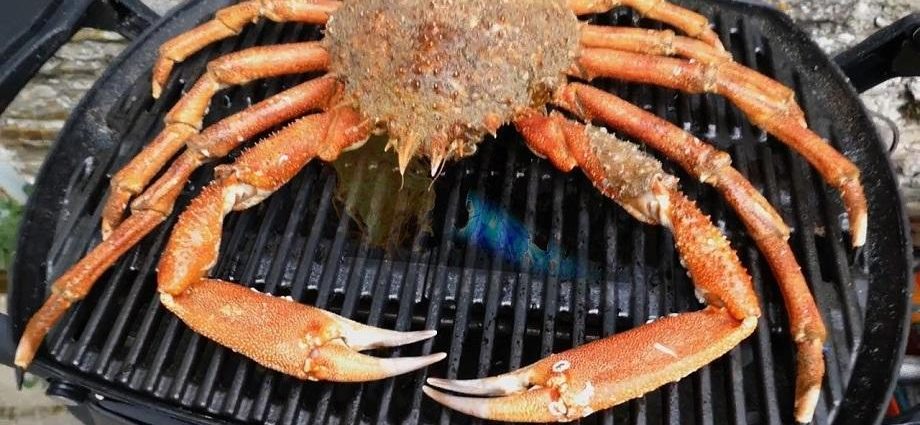The Japanese spider crab, recognizable by its large size and long, spindly legs, holds a unique place among the marine creatures of the deep sea. Inhabiting the depths of the Pacific Ocean around Japan, these crabs have intrigued scientists and seafood lovers alike. Understanding the diet of these fascinating creatures not only sheds light on their survival strategies but also on the complex ecosystems they inhabit. This blog explores the intricate feeding habits of the Japanese spider crab, enlightening us on how they sustain themselves in the challenging environments of the ocean floor.
Japanese Spider Crab Diet:
Overview of the Japanese Spider Crab Diet
Japanese Spider Crabs, with their astonishing span and alienesque appearance, form an intriguing subject of study, particularly when it comes to their dietary habits. Native to the waters around Japan, these crabs are known scientifically as Macrocheira kaempferi and are most often found at depths between 50 to 600 meters. Their diet is primarily omnivorous, which means they consume both plant and animal matter, adapting their feeding to the availability of resources in their deep-sea environment.
Typically, the Japanese Spider Crab scavenges the ocean floor for dead animals. However, it also displays some predatory behaviors, feeding on shellfish and smaller fish when the opportunity arises. Seaweed and other plant materials also constitute a significant part of their diet, helping them to balance their nutritional intake. This diverse diet supports their large size, with some individuals reaching up to 12 feet from claw to claw and weighing as much as 42 pounds.
Favorite Seafood Delicacies of Japanese Spider Crabs
In the wild, Japanese Spider Crabs display a particular fondness for certain types of seafood. Observations have highlighted a preference for:
– Bivalves: These shellfish, including clams, mussels, and oysters, are often found on the ocean floor and provide a rich source of protein and minerals.
– Carcasses: The nutrient-rich bodies of dead sea creatures, such as fish and even other crabs, are a vital food source. These provide a substantial meal with minimal effort, which is essential for the energy conservation needed in their cold, deep-sea habitat.
– Small Fish: When the opportunity presents itself, these crabs will hunt small fish, using their long limbs to trap their prey or to detect vibrations in the water as a signal of nearby food.
This preference for readily available and nutrient-dense food items ensures that they can support their large body size and energy needs in the challenging deep-sea environment.
Feeding Habits of Japanese Spider Crabs:
Unique Feeding Habits in the Deep Sea
The feeding habits of Japanese Spider Crabs are finely tuned to their environment. Living at great depths imposes certain challenges, including scarcity of light and low temperatures, which in turn affect food availability. These crabs are predominantly nocturnal, using the cover of darkness to scavenge or hunt, which reduces the risk of predation.
Their long limbs, which can span up to 12 feet, are equipped with sensitive hairs that detect chemical signals in the water, helping them to locate food in the murky depths. These limbs also help them to reach into small crevices or under rocks to find hidden food sources. When food is scarce, their slow metabolism allows them to survive on less, conserving energy between meals.
Adaptations for Feeding in Marine Life
The adaptations of the Japanese Spider Crab are a key component of its survival strategy. These crabs have several evolutionary traits that facilitate their scavenging lifestyle:
– Exoskeleton: Their hard outer shell provides protection not only from predators but also from the harsh conditions of the deep sea, including high pressure and low temperatures.
– Chelipeds (Claws): These are used to tear apart tough materials like the shells of bivalves or the tough flesh of carcasses. They also serve as defense mechanisms.
– Legs: The length and flexibility of their legs are not only useful for mobility but also assist in foraging. They can probe large areas without expending much energy by simply stretching out their limbs.
These physical attributes help them maximize their efficiency in finding and processing food, key to thriving in such an extreme environment.
Comparison with Other Marine Creatures’ Feeding Behaviors
When compared to other marine creatures, the feeding behaviors of Japanese Spider Crabs show both similarities and unique adaptations. For instance, like many crabs, they are opportunistic feeders, which is a common trait among marine scavengers. However, their ability to feed on a wide range of organic materials, from plant to animal matter, sets them apart from more specialized feeders like some fish species, which may only feed on plankton or small crustaceans.
Another creature with contrasting feeding behaviors is the starfish. Starfish are predominantly carnivorous and feed by everting their stomachs to envelop and digest their food externally. In contrast, Japanese Spider Crabs use their claws and legs to manipulate food and bring it to their mouths before internal digestion.
In examining such diverse feeding strategies, it becomes clear that marine creatures are highly adapted to their specific environments and available resources, showcasing the wonderful diversity of life in our oceans. These feeding behaviors not only highlight evolutionary success but also the delicate balance of marine ecosystems, where each organism plays a role in maintaining the health and sustainability of its habitat.
Conclusion
The diet of the Japanese spider crab is a fascinating aspect of marine biology, providing insight into the survival strategies of one of the ocean’s most intriguing creatures. These crabs have adapted to a varied diet that allows them to thrive in the deep-sea environment. Their role in the ecosystem is crucial, as they help to clean the ocean floor and recycle nutrients back into the food chain. Understanding their feeding habits further emphasizes the complexity and interdependence of marine life, highlighting the importance of conserving these and other species to maintain the health of our oceans.
